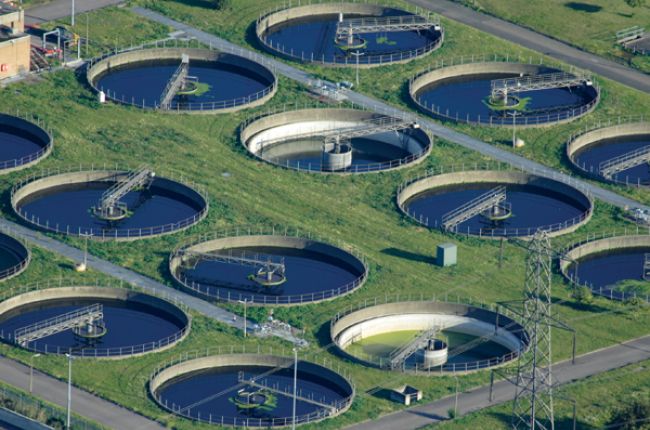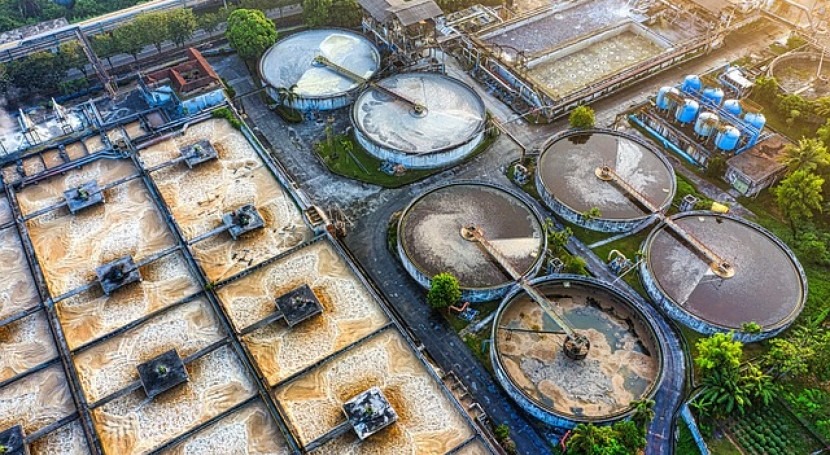Vital Action In Community Waste Water Treatment Plants
Vital Action In Community Waste Water Treatment Plants
Blog Article
Strategic Approaches to Improve Waste Water Treatment Effectiveness and Minimize Ecological Influence
In the world of waste water treatment, the pursuit for improved efficiency and reduced ecological impact is a continuous obstacle that requires critical solutions. As culture grapples with the critical to handle water resources sustainably, a nuanced approach ends up being necessary. The integration of sophisticated therapy innovations, energy-efficient procedures, source recuperation methods, enhanced nutrient elimination strategies, and clever tracking and control systems represents a complex framework for attending to these pressing issues. However, what lies at the core of this complicated internet of approaches is the potential to revolutionize the means we come close to waste water therapy, not equally as a procedure of disposal, yet as an important possibility for development and environmental stewardship.
Advanced Treatment Technologies
Advanced membrane filtration systems have reinvented advanced wastewater treatment processes, substantially improving the elimination of pollutants. These cutting-edge systems work by compeling water via a semi-permeable membrane, successfully dividing contaminations from the water stream. The membrane layer's tiny pores trap pollutants such as germs, viruses, and suspended solids, permitting just purified water to pass through. This innovation has actually confirmed to be highly efficient in eliminating a vast array of pollutants, including drugs, heavy steels, and natural compounds, which are usually testing to remove via traditional treatment techniques.
Additionally, membrane layer filtration systems offer numerous benefits over standard therapy strategies. They call for much less area, create higher-quality effluent, and are a lot more immune to changes in influent water high quality. Additionally, these systems are highly versatile and can be conveniently incorporated into existing treatment plants or used as standalone units for decentralized applications. As the demand for clean water proceeds to increase, the fostering of innovative membrane filtering modern technologies is necessary to make certain sustainable and efficient wastewater treatment practices.
Energy-Efficient Procedures
The integration of energy-efficient procedures in wastewater treatment systems is critical for maximizing source utilization and lowering operational expenses. By executing energy-efficient technologies, therapy plants can significantly reduce their carbon footprint and general ecological effect. One vital method to boosting energy effectiveness in wastewater treatment is the application of advanced oygenation systems, such as great bubble diffusers or surface aerators, which can boost oxygen transfer effectiveness and lower energy usage. Furthermore, including power recovery systems, like anaerobic digestion for biogas manufacturing or making use of excess heat for thermal processes, can assist counter energy requirements and promote sustainability.
Additionally, enhancing process control and automation with using sophisticated sensors and monitoring systems can enhance total power performance by readjusting operations in real-time based on real demand and problems. Applying power audits and regularly monitoring energy efficiency indicators are vital methods to recognize locations for enhancement and track energy-saving efforts successfully. Generally, the fostering of energy-efficient procedures in wastewater therapy not only benefits the setting yet additionally adds to lasting expense savings and functional sustainability.
Source Healing Methods
With a concentrate on maximizing resource utilization and sustainability in wastewater treatment systems, the application of resource recovery methods becomes a pivotal element in improving operational effectiveness. Source healing approaches in wastewater therapy include the recognition and removal of useful resources from the waste stream, consequently turning what was once considered waste right into a useful property. By applying resource recovery strategies such as nutrient removal and recuperation, power generation from raw material, and the manufacturing of multiple-use water, wastewater treatment plants can reduce environmental impact special info while making the most of efficiency.

Boosted Nutrient Removal Methods
Executing innovative nutrient removal techniques is vital for optimizing the effectiveness of wastewater treatment systems. Enhanced nutrient removal plays an essential function in lessening the environmental influence of treated effluent released into water bodies. Among the essential techniques made use of for boosted nutrient removal is the procedure of biological nutrient elimination (BNR), which entails the removal of nitrogen and phosphorus through organic procedures. This can be achieved via using specialized bacteria that can transform nitrogen substances right into inert nitrogen gas with denitrification, and build up phosphorus Click This Link within their cells via a procedure called boosted organic phosphorus elimination (EBPR)

In addition to BNR, advanced treatment approaches such as membrane layer bioreactors (MBRs) and built marshes can likewise be utilized to boost nutrient elimination efficiency. By integrating these sophisticated nutrient elimination methods right into wastewater therapy markets, municipalities and systems can successfully reduce nutrient contamination and protect the setting.
Smart Monitoring and Control Equipment
Making use of sophisticated technology, the assimilation of wise monitoring and control systems changes the operational effectiveness of wastewater therapy facilities. These systems incorporate innovative sensing units and information analytics to constantly keep track of essential criteria such as pH degrees, turbidity, liquified oxygen, and circulation rates in real-time. By gathering and assessing this information, operators can get useful understandings right into the efficiency of the treatment processes, allowing aggressive modifications to optimize therapy efficiency.
Smart surveillance and control systems additionally support remote monitoring abilities, enabling operators to access real-time data and control features from off-site places. This remote ease of access boosts operational adaptability and responsiveness, allowing swift treatments in situation of system breakdowns or fluctuations in influent quality. The anticipating maintenance capabilities of these systems help avoid equipment failings and reduce downtime, eventually improving the overall reliability of wastewater therapy procedures.
Final Thought
In verdict, strategic techniques such as innovative therapy modern technologies, energy-efficient processes, resource recovery strategies, enhanced nutrient removal techniques, and wise monitoring and control systems play a crucial duty in enhancing wastewater treatment effectiveness and lessening environmental effect. By applying these methods, wastewater treatment plants can enhance their general performance, decrease power intake, recuperate useful resources, and ensure compliance with ecological policies. These approaches are necessary for efficient and lasting wastewater management practices.

In verdict, tactical methods such as sophisticated treatment technologies, energy-efficient procedures, source healing strategies, enhanced nutrient removal techniques, and wise tracking and control systems play a crucial her comment is here function in boosting wastewater therapy performance and minimizing ecological effect.
Report this page